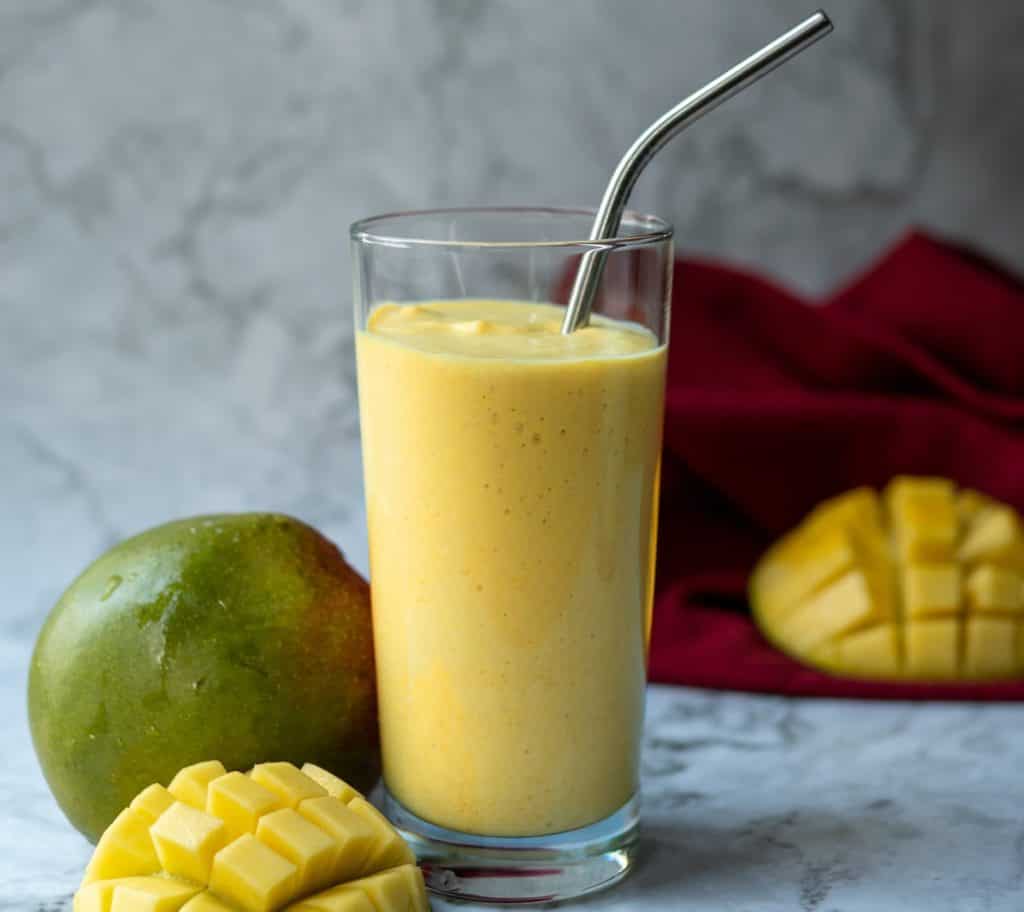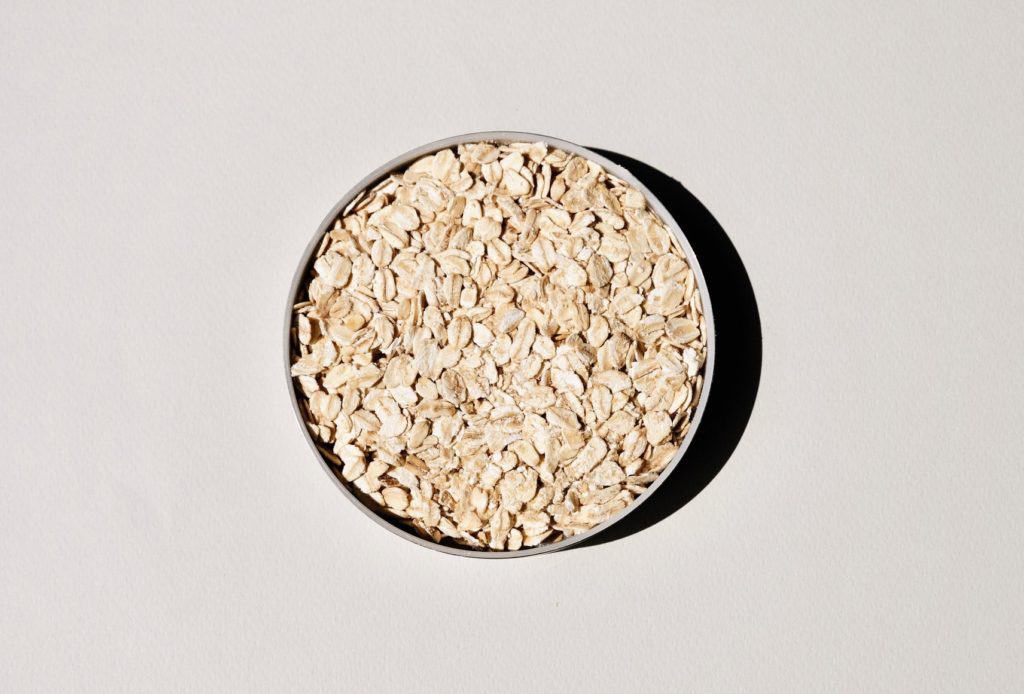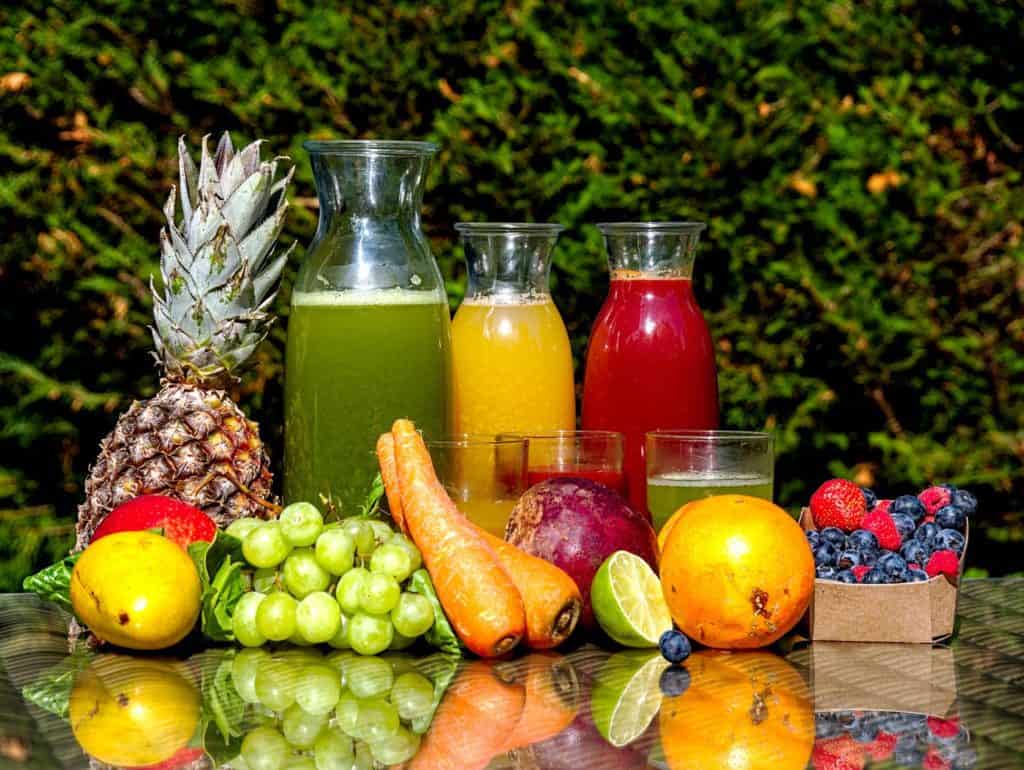
Most protein powders are lean, meaning they contain little additional carbohydrates or fats. This is favorable because it gives the user flexibility when it comes to the calorie and macronutrient content of their protein shake.
Some people just want a plain old protein shake with no additional calories, but others want something more comprehensive. Post workout is a great opportunity to take in additional carbohydrates. After resistance exercise, muscles are more sensitive to nutrients like carbs.
Shifting carbohydrates to a post workout shake makes it more likely that they will be used to replenish muscle glycogen and recovery, compared to other times of the day where they may be more apt to be stored as fat (especially when eating in a calorie surplus).
However, most protein powders containing carbohydrates are considered mass builder or weight gainer shakes. These types of powders contain upwards of 300 grams of carbohydrates per serving. That is a massive amount and isn’t applicable to most people.
Meal replacement shakes also contain carbohydrates, but in a fixed amount. You are at the mercy of whatever the nutritional profile is.
The best route is to add your own carbs to an existing lean protein shake like whey. This allows you complete control over the not only the amount of carbs, but the source as well.
Adding carbohydrates is easy and allows for complete customization of the nutrition profile of the protein shake. In addition, your nutrition needs may change on a day-to-day basis, so you can choose a different source or amount depending on the situation.
These carbohydrate sources all offer a unique benefit and are relatively inexpensive.

1. Oats
Blending oats into a shake gives it a unique texture and taste. The complex carbohydrates and fiber, coupled with the texture, makes it filling. This is helpful for people on a diet looking for something satiating, or for people who won’t be able to eat for a period of time and need something to hold them over.
When blending oats, it should be kept in its raw state. Using quick oats is usually the preferred method, as quick oats are smaller and finer than regular.
Some people make oatmeal the old fashioned way in a bowl, and add a scoop of protein powder at the end. This is called protein oatmeal, or proats. It can be made on the stove or in the microwave.
In order for proats to mix properly, you would simply add more water or milk to the oatmeal than usual. The extra liquid will allow the protein to mix after cooking.
2. Fruit
There is a seemingly limitless number of fruit or fruit combinations you could add to a protein shake. Fruit is a broad category, with carbohydrate content varying among the different types.
Fruits like blueberries, blackberries, and strawberries have a low number of carbohydrates per serving. Similar to oats, this is helpful for someone wanting a small to moderate amount of carbs in their protein shake. Berries have a high water and fiber content, which makes them satiating as well.
Frozen berries will make a shake thicker than usual. They also stay fresh for a longer period, making them cost effective.
Fruits like bananas are more carbohydrate dense, meaning they contain more carbs on a per serving basis compared to other fruits. Bananas are a great source of potassium and mix very easily in a blender. They go with almost any flavor of protein powder.
You could conceivably add any fruit to a shake, the only issue with some may be mixability. But a good blender like Nutribullet can grind up almost anything, even dense fruits like apples.
| Fruit | Carbohydrates per 100g serving |
|---|---|
| Apples | 14g |
| Bananas | 23g |
| Blackberries | 10g |
| Blueberries | 14g |
| Kiwi | 15g |
| Mangoes | 17g |
| Peaches | 10g |
| Pineapple | 12g |
| Raspberries | 12g |
| Strawberries | 8g |
3. Gatorade
Gatorade provides a fast, easily digestible source of carbohydrates. It’s a great option for people who don’t have the time or means to blend something up but still want carbs in their shake. Gatorade is sold everywhere and comes in a ton of different flavors. This allows for variation, as you could try a different flavor every day for weeks.
You probably want to limit yourself to vanilla or fruit flavored protein powder if mixing with Gatorade, as chocolate might taste a little weird. Orange Gatorade with vanilla protein powder is one of the most popular combinations.

4. Fruit Juice
Fruit juice is a denser source of carbohydrates compared to regular fruit. But a good fruit juice still will provide vitamins and minerals. In fact, natural sources of fruit juice (not from concentrate) are often a more potent source of nutrients and antioxidants than fruit itself.
In any case, the convenience of fruit juice is similar to that of Gatorade. Fruit juice is a better choice for people who want more bang for their buck when it comes to the micronutrient content of a protein and carb shake.
5. Carbohydrate Powders
Carbohydrate powders fall into their own category of supplements. Carbohydrate powder sources include dextrose, waxy maize, cluster dextrin, among many others.
Dextrose is a simple sugar, composed entirely of glucose. Glucose is the preferred carb source for muscle, particularly after a workout. It is the least expensive carbohydrate powder you will find.
Waxy maize is derived from corn, which makes it technically a starch. Therefore it digests slower than simple sugars.
Cluster dextrin is considered one of the highest quality carbohydrate supplements on the market today. The carbohydrate itself is called highly branched cyclic dextrin, but it is sometimes branded as cluster dextrin. Just note that it is the same thing no matter which name appears on the label.
Cluster dextrin has a high molecular weight, which means it doesn’t sit in the stomach and cause cramping. It quickly gets into the bloodstream to be used for energy and recovery. This is why it is such a popular intra workout drink.
When purchasing cluster dextrin, it’s important to make sure you are not buying a blend of different carbohydrates with cluster dextrin included. Some companies will do this but market it as cluster dextrin, but in reality it is not 100% cluster dextrin.
Redcon1 is a quality brand that offers a 100% cluster dextrin carbohydrate product.
6. Sweet Potato
A sweet potato may seem like an odd choice to add to a protein shake, but it complements the flavor of the powder nicely. Sweet potatoes are a great source of potassium and vitamin A. Unlike oats, you want to cook the sweet potato first before blending.
Sweet potatoes are a great carb source to use when making protein pancakes as well. Most people use oats or a banana, but sweet potatoes provide better taste and texture. Pancakes with oats typically taste dry, but sweet potatoes do not.
7. Milk
Milk not only provides additional carbohydrates, but protein as well. So long as you are not lactose intolerant, milk is a great and often overlooked option for protein and carbs.
If you’re looking for low to moderate carbs, opt for whole, low fat, or skim milk. For something more carbohydrate dense, you can add chocolate milk.
Milk sometimes gets a bad rap, but it’s a great source of vitamin D, calcium, and potassium. If you can find a quality, ethically sourced farm, it’s a great option for protein shakes.
Summary
Adding carbohydrates to a post workout protein shake is a great way to replenish muscles and start recovery. Even though most lean whey protein powders contain a few carbs at most, adding your own source is simple.
Choosing the right source can not only provide additional carbohydrates, but vitamins, minerals, and antioxidants as well. Fitness enthusiasts should always try to optimize every aspect of their diet to get the most out of their workouts. Protein shakes and supplementation in general is no different.
